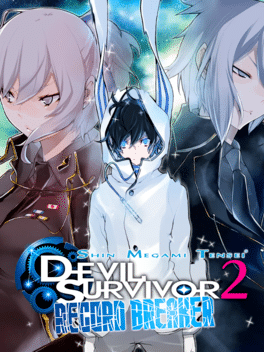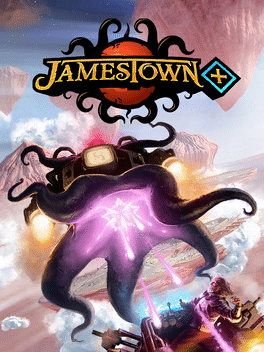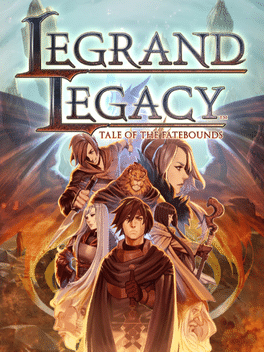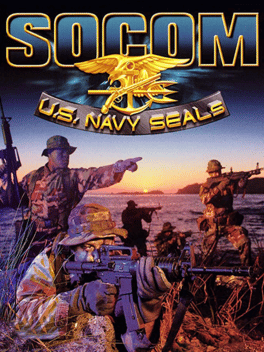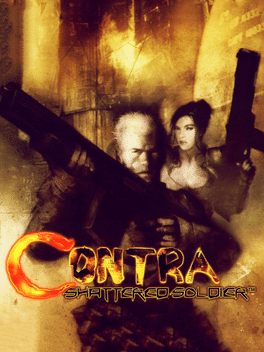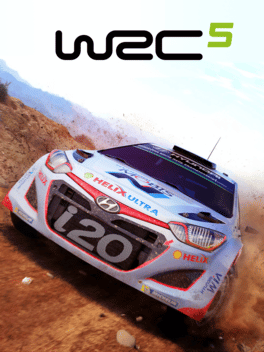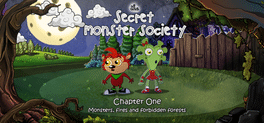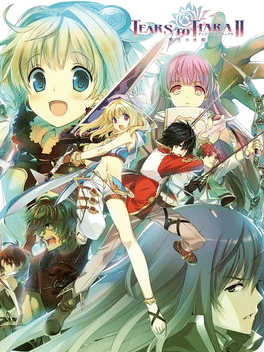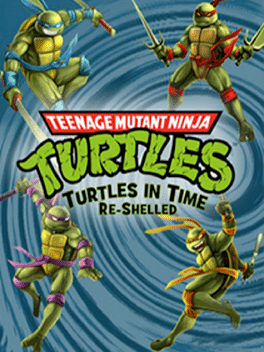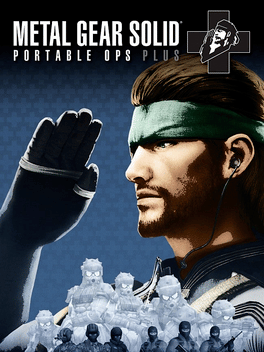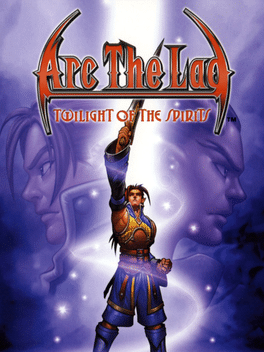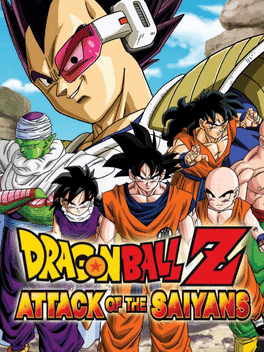Most Popular Games - Page 478
-
Dead Rising: Triple Pack
2016
star 7.1Enjoy three times the zombies with the Dead Rising Triple Bundle Pack, containing Dead Rising, Dead Rising 2, and Dead Rising 2 Off The Record. What a time to be undead! -
Space Hulk
2013
Space Hulk
2013
star 6.9Based on the best-selling board game and set in the Warhammer 40,000 universe, Space Hulk is a 3D digital turn based strategy game that recreates the classic claustrophobic board game experience for single player and multiplayer cross-platform play between PC, Mac and on iOS. Space Hulk is set in the isolated corridors and tomb-like chambers of an ancient vessel lost in the graveyard of space. Players lead a small army of fearless Space Marine Terminators to battle in a ferocious fight for survival against hordes of predatory alien Genestealers. -
Shin Megami Tensei: Devil Survivor 2 - Record Breaker
2015
star 7.7Your days are numbered. This is a chilling reminder that the apocalypse is upon us. Exclusive to the Nintendo 3DS handheld system, Shin Megami Tensei: Devil Survivor 2 Record Breaker offers more than 100 hours of gameplay and plot -- nearly double the content of the original Devil Survivor 2. It also includes fully voiced English story dialogue, giving new depth to the cast of Devil Survivor 2's original story. Record Breaker requires no knowledge of the story from the original Devil Survivor, so newcomers to the series won't lack any crucial plot information. -
Jamestown+
2015
Jamestown+
2015
star 8.5Set sail for 17th-century British Colonial Mars in Jamestown+: a cooperative shoot-em-up for 1-4 brave souls, designed to be exciting for players of all skill levels. -
Moero! Nekketsu Rhythm Damashii Osu! Tatakae! Ouendan 2
2007
star 8.3Ouendan returns with nineteen more J-Pop/Rock songs, along with nineteen more situations where only a cheer squad can save the day. The original Ouendan and joined by a new team, the Morning City Ouendan, who wear blue in contrast to the black of the Evening City Ouendan. Gameplay is largely identical to the original, tapping, sliding and spinning to match the beat of the song playing, in order to progress through different stages of a song. The closer the player gets to matching the song, the more points will be earned and the better the rank achieved. The whole game is played using the stylus. Improvements made in 2006's Elite Beat Agents (the non Japanese "remake" of Ouendan) have been carried over, such as the ability to completely skip introductions and unlockable songs. One replay can be saved on each song, improving the system from Elite Beat Agents. -
Valkyrie Profile: Lenneth
2006
star 7.6Valkyrie Profile: Lenneth is the PlayStation Portable port of the original Valkyrie Profile developed. The port is of the Japanese PlayStation version and does not have any of the gameplay improvements or changes made to the original English version, though the additional cinematics included in the English version are intact. Full motion video has been added to story events in the game and replaces all original anime scenes. Lezard Valeth's teleportation circle was changed from a pink pentagram to a purple circle though this was left unchanged in the PlayStation Portable version. The names of Frei, the elder sister, and Freya, the younger, were reversed from Norse mythology and from the Japanese version (though in the former, Frei is the elder brother). The English version of Lenneth uses an enhanced version of the original game's localization and reuses the original English voiceover track. Square Enix cleaned up the original game's English script and additional voice over dialogue for the CG movies was recorded -
Legrand Legacy
2018
Legrand Legacy
2018
star 6.8LEGRAND LEGACY is a spiritual successor to some all-time favorite JRPGs with a fresh take on the classic turn-based combat. Explore a beautifully hand-drawn world riddled with fantastical creatures, devastating wars, and intriguing stories of personal redemption. Play our demo and discover why Legrand Legacy is the "Most Promising Game" of the year! -
SOCOM: US Navy SEALs
2002
SOCOM: US Navy SEALs
2002
star 7.9The player leads a four-man team (three AI-controlled teammates) of United States Navy SEALs through 12 missions in four regions: Alaska, Thailand, Congo, and Turkmenistan in the years 2006 and 2007. In the single player missions, commands can be spoken using the included USB headset or via an onscreen menu if the optional SOCOM headset was not purchased. Typical missions consist of killing terrorists, rescuing hostages, retrieving intelligence, or destroying terrorist bases. The player character's codename is Kahuna, while the NPC teammates' codenames are Boomer, Spectre and Jester. The team is divided into two sub-groups, Alpha and Bravo. The Alpha group consists of the player and Boomer, while the remaining two make up Bravo. Commands can be issued to both individuals and a whole group, for example it is possible to ask team Bravo to remain stationary while the player is scouting the area with Boomer. However the player can not venture alone through a map, when Kahuna is too far away from Boomer he will automat -
Contra: Shattered Soldier
2002
star 5.9In A.D. 2642, Earth remains scarred from previous alien conflicts as environmental problems grow beyond humanity's control. 80% of the planet's population was completely devastated by a malfunctioning hyper-magnetic weapons grid during development. Bill Rizer, the hero of the Alien Wars, was held responsible for the incident, as well as for murdering his partner, Lance Bean, who reportedly tried to stop him. He was given a sentence of 10,000 years in cryogenic prison. However, five years later, in 2647, Earth faces another threat as the terrorist organization "Blood Falcon", led by a mysterious and superhuman commander, spreads panic over the world. The ruling government, referred to as the "Triumvirate", decides to release Bill Rizer prior to completing his sentence, in view of his previous successes in defending Earth, in hope of neutralizing Blood Falcon. Lucia, an advanced cyborg soldier built by the government from Dr. Geo Mandrake's research, is sent to accompany and assist Bill's endeavors. Bill eventually -
WRC 5 FIA World Rally Championship
2015
star 6.5Find all the cars, all the drivers and all the official rallies of the 2015 FIA World Rally Championship in THE racing simulation standard. Realistic driving on different road surfaces, dynamic damage, day/night system, weather… Experience all the sensations of rally racing in WRC 5! -
The Secret Monster Society: Chapter 1 - Monsters, Fires and Forbidden Forests
2016
star 8.5A classic point-and-click comedy adventure game, set in a unique world of monsters and creatures. Embark on an epic adventure across land and sea, using time travel to stop an evil genius from destroying the world. Inspired by Saturday morning cartoons. -
Lost Soul Aside
2025
Lost Soul Aside
2025
star 7.3Embark on an epic odyssey to save your sister and the whole of humankind from dimensional invaders in a stylish single player action-adventure RPG. Chain lightning-fast combos, learn new abilities, and upgrade your weapons as you take on formidable enemies and colossal bosses in fast, dynamic combat. -
Tears To Tiara II: Heir Of The Overlord
2013
star 7.8Hamil and the war god Tarte lead a rebellion against the divine empire in this Strategy RPG/ Visual Novel hybrid -
Teenage Mutant Ninja Turtles: Turtles in Time Re-Shelled
2009
star 5.6Teenage Mutant Ninja Turtles: Turtles in Time Re-Shelled is an enhanced remake of the 1991 arcade game, Teenage Mutant Ninja Turtles: Turtles in Time, which itself is a sequel to the original Teenage Mutant Ninja Turtles arcade game. Both of the original arcade games were produced by Konami. It is a side scrolling beat 'em up, mostly based on the 1987 animated series, the Teenage Mutant Ninja Turtles Adventures and the second movie. It was developed and published by Ubisoft Singapore for the PlayStation 3 and Xbox 360. It was released worldwide on August 5, 2009 on Xbox Live Arcade and September 10, 2009 on the PlayStation Network. The game was later delisted from the Xbox Live Marketplace and the PlayStation Store in June 2011, due to an expired license. -
Kelvin and the Infamous Machine
2016
star 8.1Kelvin and the Infamous Machine is a hilarious point-and-click adventure in which you stumble irresponsibly through history to help legendary geniuses complete their masterworks! -
Metal Gear Solid: Portable Ops Plus
2007
star 6.6A standalone expansion to Metal Gear Solid: Portable Ops, mainly focused on multiplayer. A single player mode called Infinity Mission was included, but has no story. There are also new missions and tutorials for beginners. With up to 6 players via WiFi, new characters including Old Snake from Metal Gear Solid 4, Roy Campbell, and Raiden from Metal Gear Solid 2, this game continues the trend of capturing and recruiting comrades. -
Arc the Lad: Twilight of the Spirits
2003
star 7.8The world of Arc: Twilight of the Spirits is populated by two races: human and Deimos. The two races prefer to avoid contact with each other, but both depend on the Spirit Stones to sustain the balance in the world. Recently, the human army began sweeping across the lands, taking over countries. This army is going after the five great Spirit Stones. The Spirits, however, are determined to prevent this; to achieve their goal, they choose two heroes who would eventually be able to unite the two races in a battle for justice. One of them a is a human nobleman named Kharg, who hates the Deimos and is planning revenge; another is a Deimos slave named Darc, who dreams of uniting and commanding his race. Will the two heroes be able to put aside their differences and save the world?.. Arc: Twilight of the Spirits is the fourth entry in the Arc the Lad series. Like its two immediate predecessors, the game has tactical battles which allow free positioning and movement of the characters on the combat field. However, the game -
Atelier Iris 3: Grand Phantasm
2006
star 5.9The 8th core Atelier game and final game in the Iris series. -
Naruto: Clash of Ninja Revolution 2
2008
star 6.2NARUTO: Clash of Ninja Revolution 2 provides players with quality fighting game mechanics and a fast-paced gameplay experience on Wii. Set after Sasuke leaves the Leaf Village to gain more power from Orochimaru, the title offers a slew of playable characters, including those developed especially for the storyline. Clash of Ninja Revolution 2 features destructible stages and four-player multiplayer battles, along with gameplay modes and characters not yet seen on the Clash of Ninja series. -
Dragon Ball Z: Attack of the Saiyans
2009
star 7.1The game follows the Saiyan Saga of the original DBZ story starting from the World Tournament and Goku's triumphant defeat of Piccolo. Players take the role of Goku and travel the DBZ universe from jungle to Snow Mountain on their quest to victory. Dragon Ball Z: Attack of the Saiyans features a host of original features which will be sure to thrill fans, such as brand new gameplay, unique game modes, fun side quests and content never before seen in either the anime or manga series.



